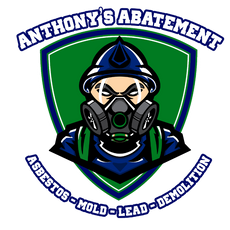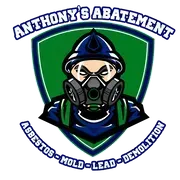Safeguard Your Home with Expert Asbestos Floor Tile Removal
Addressing Your Asbestos Concerns with Professional Care
Asbestos, once a common material in vinyl floor tiles, becomes a health hazard when disturbed. If your home was built before the 1980s, it's possible that your floor tiles contain asbestos. Disturbing these tiles during renovations or removal can release harmful asbestos fibers into the air, posing a risk of serious diseases such as mesothelioma and asbestosis. Our goal is to eliminate these risks, ensuring the safety of your living environment. Keep reading to learn more and understand the risk of asbestos floor tiles.

How Do I Know If my Floor Tiles Contain Asbestos?
- Consider the Age of Your Building: If your home or building was constructed or renovated before the 1980s, it's more likely that the floor tiles could contain asbestos. Asbestos was a common component in vinyl and asphalt floor tiles during that period.
- Inspect the Tiles' Appearance and Condition: Asbestos-containing floor tiles were often made in 9-inch or 12-inch squares and may have a distinct pattern or coloring indicative of older styles. Also, look for signs of wear or damage, as deteriorating tiles can be a concern for asbestos fiber release.
- Professional Testing: The most reliable way to determine if your floor tiles contain asbestos is through professional testing. This involves having a certified asbestos inspector or a licensed professional take a sample of the tile and sending it to a laboratory for analysis.
- Avoid Disturbing the Tiles: Until you have confirmation, it's important to avoid disturbing the tiles, as breaking, sanding, or removing them can release asbestos fibers into the air.
- Do Not Rely on Visual Inspection Alone: Asbestos fibers are microscopic and cannot be seen or smelled. Visual inspection alone cannot confirm the presence of asbestos in floor tiles.
- Consider the Adhesive: Sometimes, the adhesive under the tiles also contains asbestos. Even if the tiles themselves do not contain asbestos, the adhesive might, which is another reason to have professional testing done.
Ensure the safety of your home with our expert asbestos floor tile removal services. Contact us now for a free home safety evaluation and take the first step towards a healthier, asbestos-free environment.
Can Asbestos Dust Be Released From General Wear and Tear On The Floors?
Yes, asbestos dust can be released from general wear and tear, particularly if the floor tiles are in poor condition. As these materials age or become worn, they can become friable, meaning they can easily crumble and release asbestos fibers into the air. Walking or moving furniture on damaged asbestos floor tiles can cause enough disturbance to release fibers. Therefore, it's important to monitor the condition of any known or suspected asbestos containing floor tiles in your home or building and take appropriate action if they show signs of wear or damage.
Our Asbestos Floor Tile Removal Process
Anthony's Abatement follows a strict, regulated process to safely remove asbestos floor tiles, minimizing the risk of asbestos fiber release. Here's an overview of the typical procedure:
- Initial Assessment: A professional first conducts an inspection to confirm the presence of asbestos in the floor tiles.
- Preparation of the Work Area:
- The area is sealed off with plastic sheeting to contain asbestos fibers.
- Warning signs are posted to restrict unauthorized access.
- HVAC systems are turned off, and vents are sealed to prevent the spread of asbestos fibers.
- Safety Gear: Workers wear personal protective equipment (PPE), including respirators with HEPA filters, disposable coveralls, and gloves.
- Wet Methods: The tiles and adhesive are kept wet during removal. This suppresses dust and prevents fibers from becoming airborne.
- Careful Removal: Tiles are carefully removed to minimize breakage. The aim is to keep them intact as much as possible.
- Proper Disposal:
- Asbestos waste, including tiles and protective clothing, is placed in sealed, labeled bags.
- These bags are disposed of at designated asbestos waste disposal facilities.
- Clean-Up:
- The area is cleaned using HEPA vacuums and wet wiping methods to remove any residual asbestos.
- After removal, air quality testing may be conducted to ensure the area is safe for reoccupation.
- Legal Compliance: The entire process complies with local, state, and federal asbestos regulations.
Professional asbestos removal is critical due to the health risks associated with asbestos fibers.
Get a Free Home Safety Evaluation
For more information about our services or to schedule an appointment, call us at (959) 202-2675 or complete the form below and we’ll get back to you as soon as we can.
Other Services
Asbestos Floor Tile FAQ
There are Plenty of Materials Testing Companies in Connecticut
So Why Choose Anthonys Abatement?
Exceptional Customer Service
Speak with a real person, our responsive office staff will get you an estimate within 24 hours.
Experienced, On-time Crews
All technicians have 10-15 years of experience. We use cutting edge technologies and tools to ensure you get accurate results, quickly.
Licensed & Regulation Compliant
We're fully licensed and strictly adhere to all environmental regulations and industry standards.
Local, Family Owned
Anthony's Abatement is family-owned and operated and has been serving CT for over 10 years.
Based in West Hartford, CT
Serving the Whole State of Connecticut
Anthony's Abatement proudly services the entire state of Connecticut. We are committed to delivering exceptional abatement solutions to our valued clients in all areas, ensuring that no corner of the state is left unattended.







